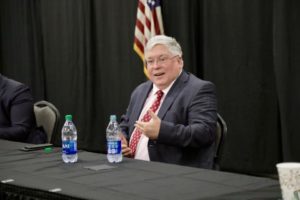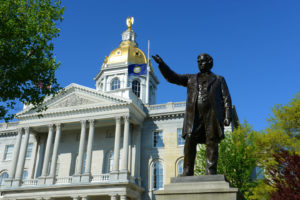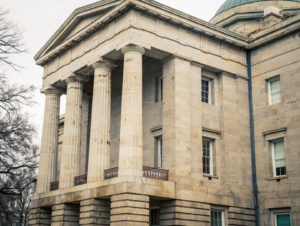What powers do lawmakers have, and how much do the courts have, in school funding? North Carolina to decide
(The Center Square) — North Carolina lawmakers have some questions for the state Supreme Court to ponder in the decades-long Leandro school funding lawsuit.
In an opening brief filed by…

(The Center Square) — North Carolina lawmakers have some questions for the state Supreme Court to ponder in the decades-long Leandro school funding lawsuit.
In an opening brief filed by legislative leaders last week, attorney Matthew Tilley highlighted the high court’s history of honoring the separation of powers between the judicial and legislative branches, and offered a series of questions to consider in a legal dispute over a trial judge’s order to bypass the General Assembly to force education spending.
Tilley noted a 1996 opinion in the Leandro case from Chief Justice Burley Mitchell that referenced the limits of the judiciary’s influence on education policy and funding by arguing “administration of the public schools of the state is best left to the legislative and executive branches of government.”
The Supreme Court reiterated Mitchell’s position six years later when justices noted the legislative and executive branches maintain superior expertise “in service to a subject matter, such as public school education, that is within their primary domain,” Tilley wrote, according to The Carolina Journal.
Tilley argued the court began to shift away from judicial restraint in the 20 years that followed, as justices leveraged a decision on school conditions in Hoke County “into a platform for seemingly permanent judicial supervision over all aspects of public education policy and funding in the State of North Carolina.”
Tilley urged justices to recognize the court’s early rulings in the case and “reiterate the limitations of the judicial branch’s authority to provide remedies for violations related to public education and the limited scope of the matter that is actually before the court.”
The matter before the Supreme Court now centers on a November 2021 order from Superior Court Judge David Lee that required state officials to transfer $1.75 billion from the treasury to cover two years of a Leandro Comprehensive Remedial Plan, which was developed with support from the Leandro plaintiffs and the State Board of Education.
Eight days after Lee’s order, lawmakers enacted a state budget that included some of the spending. Judge Michael Robinson, who replaced Lee in the case, reconciled the state budget spending on education with the spending order to reduce the figure to $785 million, while also eliminating the demand to move the money without legislative approval.
Plaintiffs in the case want the Supreme Court to reinstate the forced transfer, while lawmakers argue public education policy and spending rests with the legislative and executive branches.
Questions posed in Tilley’s brief with the Supreme Court urge justices to confront the crux of the case.
“Did the trial court violate the separation of powers, reflected in Article I, Section 6 of the North Carolina State Constitution, by purporting to exercise legislative powers that are entrusted exclusively to the General Assembly?” Tilley wrote.
“Did the trial court improperly decide a political question by issuing an order requiring the State to implement, and fund, each element of the Plaintiff’s proposed Comprehensive Remedial Plan (“CRP”)?”
“Did the trial court err by entering a statewide judgment based on a supposed statewide constitutional violation that was never asserted, never made the subject of a judgment, and on which there was never any evidence submitted at trial?”
Those questions and many others will be answered through briefs to the Supreme Court from attorneys representing the plaintiffs, the North Carolina Department of Justice and lawmakers in the case, between now and Aug. 1.
Oral arguments are scheduled for Aug. 29, the Journal reports.



